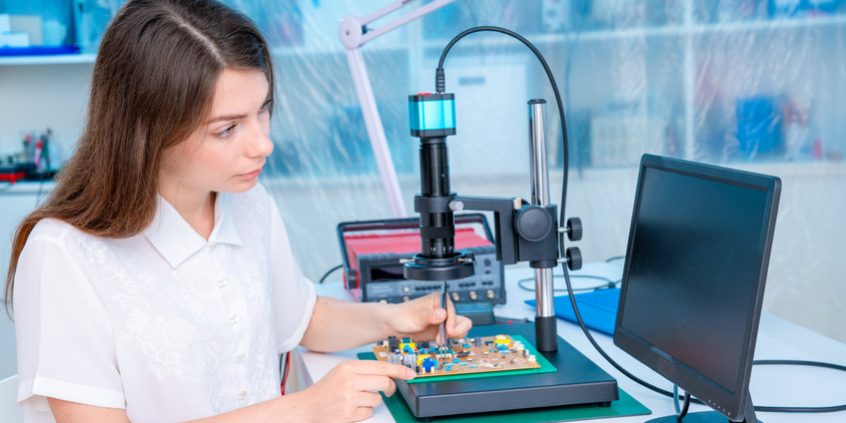The Coronavirus pandemic hit when the world was in the middle of a tech boom. The supply of assemblies even before then couldn’t keep up with the demand. For manufacturers, COVID-19 only made the situation worse, leading to a chip shortage dubbed ‘Chipageddon’.
With this shortage, consumers should expect limited supplies, and long waiting times for purchases that depend on assemblies like cars, and gadgets. And assemblies are more complex today than they were five years ago. So, the question now becomes, how can manufacturers deal with this situation?
One process that electronics manufacturers are using to tackle the problem is rework and repair of damaged boards. That said, this process requires a surgeon-like precision. While beginner level soldering can deal with minor fixes, most rework and repair jobs need expert level attention.
Rework and repair may seem like a daunting task, however, assembly staff can learn some effective methods to facilitate the process while meeting industry demand. This article will discuss which strategies lead to an effective PCB rework and repair, and how a soldering training course can help improve and streamline that process even further.
Ensure Proper Storage And Handling
To maintain PCB quality, handling, packaging and storage methods must be taken into careful consideration. Not considering these three factors can result in moisture uptake which could degrade a board’s solderability, contamination, and even physical damage like warping.
One of the most common, and biggest issues regarding PCB storage is the atmosphere as humidity and temperature levels can affect the quality of the PCB while it’s in storage. Staff must ensure that humidity and temperature in the assembly production facility remain relatively consistent to prevent condensation build-up. Experts recommend humidity to be kept between 40 to 70 percent, and the temperature between 70 and 78 degrees Fahrenheit.
Moreover, staff should also check that the materials of the packaging used for transporting and storing PCBs will not harm the board in any way. Lastly, they should also adopt a first in, first out approach when storing, and handling boards to decrease their exposure to harmful conditions.
Know Every Detail Of Your Product
Is your PCB using halogen-free resin? Is solder used to mount components leaded or lead-free?
Knowing every bit of important information regarding your company’s assembly products allows you to use the right methods for the reworking and repair process, which in turn saves you time. Some of the most vital information you need to know are the materials that make up the PCB, its common issues, and where it was initially manufactured.
Having ample knowledge on your products ensures a smooth rework and repair process. Investing in an ipc course can help you facilitate that process, because the certification comes with a correlated training on the PCB rework and repair process
Prepare The Right Tools, Then Divide And Conquer
The two main processes involved in a rework or repair are reflowing or removal/replacement of components. If the solder applied on the board is not enough, or if there are areas that don’t have any solder at all, then reflowing is required.
Removal or replacement on the other hand, entails removing the solder from the joins, removing the component, and mounting a new component. For any rework or repair task, you would need hot air tools or a hot air rework system to work on large areas of the board without damaging the surrounding components, a desoldering tool to remove solder and component, and ovens or Infrared (IR) to preheat boards.
If the task is complex, dividing the labor for each board can save manufacturers a lot of time and money because when you separate the steps required to complete each board, production efficiency increases, while assembly errors are reduced.
Conclusion
There are many factors to keep in mind when you’re looking to repair and rework PCB assemblies effectively. Different types of assemblies require different types of methods that will preserve the board’s functionality, reliability, and the longevity of its mounted components.
For the reasons above, it is highly recommended to consult with experts in the process, or partner with a qualified training institute that offers a soldering training course or an ipc course.
If you need your staff to improve their rework and repair skills, our experienced instructors can help. Contact Blackfox today at (888) 837-9959 or at [email protected].






